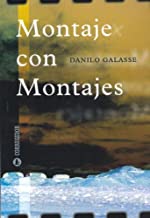Libros relacionados
 |
Tvmorfosis 2 Convergencia y Escenarios Para una Televisión Interactiva Orozco Guillermo Editorial Tintable |
 |
Deshojando la Noticia: la Representacion del Noticiero Televisivo en el Discurso Cittadini, Maria Gabriela. El Otro @ el Mismo |
 |
3d Television (3dtv) Technology, Systems, And Deployment: Rolling Out The Infras Daniel Minoli Crc Press |


|
Título: Metropolis: Tha American City In Popular Culture | |
| Autor: Zecker Robert | Precio: $652.00 | |
| Editorial: Praeger Publishers | Año: 2008 | |
| Tema: Television | Edición: 1ª | |
| Sinopsis | ISBN: 9780275997120 | |
| Ever since the rise of mass culture, the idea of The City has played a central role in the nation's imagined landscape. While some writers depict the city as a site of pleasure and enjoyment, the thrills provided there are still generally of an illicit nature, and it is this darker strain of urban fiction-one that illuminates many of the larger fears and anxieties of America at large-that this book addresses. From The Wire's Baltimore to Martin Scorsese's New York, from the Newark of Philip Roth and The Sopranos, to Jeffrey Eugenides's Detroit, The City is everywhere, and everywhere proclaiming on the rise and
Around 1900, writers for Harper's, Century, and other magazines took middle-class Americans on safari through Little Italy and the Jewish Lower East Side. Later, at the dawn of the talkies, one of the most popular genres was the gangster film, through which the city was often portrayed as a powerful force that sent poor souls to their doom. With the urban disturbances of the 1960s, popular culture took another look at the city and decided that from Detroit to Watts to Harlem, the problem had a different face. Blaxploitation classics such as Shaft and Fort Apache the Bronx, as well as police and crime films of the '60s and '70s, offered a cinematic exclamation point to the famous Daily News headline: Ford to New York: Drop Dead! Later filmmakers offered a more nuanced view of the city, with Scorsese and Coppola paying homage to an old neighborhood of wise guys and goodfellas, and Woody Allen offering the city as a home of urban aesthetes. Meanwhile, on television, crime shows (from The Streets of San Francisco to NYPD Blue, Cops, and all the CSI programs) have for decades rooted their separate identities in the crime-ridden city itself. Yesterday's foreign threat to the body politic is today's jaded suburbanite, and this work also considers the current development of the cyber-city where urban exiles use their computers to re-imagine the cities of their youth as safe, warm places where we never locked our doors. The City continues to thrill and repulse, and even the Internet once again reduces the mean streets to a titillating story arc |
||
Librería Bonilla SA de CV © Todos los derechos reservados. 2019
Última actualización: Jul 2019





